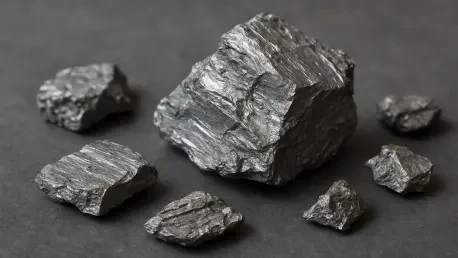Diving into the world of critical minerals, we’re thrilled to sit down with Priya Jaiswal, a renowned expert in market analysis and international business trends with a deep understanding of the mining and defense sectors. Priya brings a wealth of knowledge on how strategic materials like scandium are shaping industries and geopolitics. In this interview, we explore a groundbreaking agreement between an Australian mining company and a major U.S. defense contractor, the significance of scandium in high-tech applications, the dynamics of global supply chains, and the broader implications of international partnerships in securing essential resources for national security and innovation.
Can you walk us through the recent agreement between Sunrise Energy Metals and Lockheed Martin, and what it means for both parties?
Absolutely. Sunrise Energy Metals, an Australian company, has signed a five-year option with Lockheed Martin, a key player in U.S. defense, to potentially purchase up to 15 tonnes of scandium oxide from their Syerston Scandium Project. For Sunrise, this is a significant step to secure a foothold in the U.S. market and validate their project’s output. For Lockheed Martin, it’s about locking in a supply of a critical material needed for advanced technologies. If fully exercised, this option could account for about 25% of the project’s annual production, so it’s a substantial commitment, though it’s contingent on finalizing binding agreements.
How did the financial markets respond to this announcement?
The reaction was quite telling. Sunrise Energy Metals saw their share price surge by as much as 15.6% to A$5.49 shortly after the news broke. This was their strongest trading session since early October, reflecting investor confidence in the deal’s potential to boost the company’s revenue and visibility in the critical minerals space. It shows how much the market values strategic partnerships like this, especially with a giant like Lockheed Martin.
Why is scandium such a vital material for industries like defense and aerospace?
Scandium is a game-changer in these sectors due to its unique properties. When alloyed with aluminum, it creates materials that are incredibly strong yet lightweight, which is crucial for aircraft, missiles, and other military hardware where performance and efficiency are non-negotiable. It’s also used in energy applications like solid oxide fuel cells. The demand for scandium is driven by the need for cutting-edge tech in defense and sustainable energy, making agreements like this one critical to meeting those needs.
What can you tell us about the current state of the global scandium supply chain?
The global supply chain for scandium is heavily concentrated, and that’s a big concern. Right now, nearly all of the world’s supply comes from China, Russia, and Ukraine. This creates vulnerabilities, especially for countries like the U.S., which hasn’t mined scandium domestically since 1969. Relying on foreign sources for such a strategic material poses risks in terms of supply disruptions and geopolitical tensions, which is why securing alternative sources through partnerships like this one is so important.
How does the U.S.-Australia critical minerals pact play into this specific deal?
The U.S.-Australia critical minerals pact, recently highlighted during a meeting between President Trump and Prime Minister Albanese at the White House, is a foundational element here. It’s a bilateral commitment to collaborate on securing supply chains for critical minerals like scandium, which are essential for national security and economic stability. This agreement between Sunrise and Lockheed Martin directly aligns with that pact, showcasing how policy-level cooperation translates into actionable business deals that reduce dependency on less reliable global sources.
What are the next steps for this partnership to move forward?
There’s still some groundwork to be laid before scandium starts changing hands. The deal hinges on finalizing binding offtake agreements, which will outline the specifics of the purchase. Additionally, there’s testing and qualification work underway to ensure scandium-containing components meet Lockheed Martin’s rigorous standards for their product platforms. This process is crucial to accelerating the adoption of these materials in their systems, so it’s a blend of technical and contractual steps ahead.
How does this agreement fit into the larger picture of securing critical minerals for the U.S.?
This deal is part of a broader push by the U.S. to shore up its access to critical minerals, especially those vital for defense and technology. Beyond this partnership, there are other initiatives, like collaborative programs with companies exploring scandium-aluminum alloys for military use under Pentagon-funded efforts. These efforts collectively aim to diversify supply chains, reduce reliance on adversarial nations, and build resilience in strategic industries. It’s a multi-pronged strategy where every agreement like this one adds a layer of security.
What is your forecast for the future of scandium and critical minerals in global markets?
I see the demand for scandium and other critical minerals continuing to climb as defense, aerospace, and clean energy technologies advance. The challenge will be balancing supply with geopolitical stability—countries like the U.S. and Australia will likely deepen partnerships to create more robust, localized supply chains. However, competition for these resources could intensify, potentially driving innovation in extraction and recycling methods. Over the next decade, I expect critical minerals to become even more central to international trade and security discussions, with deals like this setting the tone for how nations collaborate.









